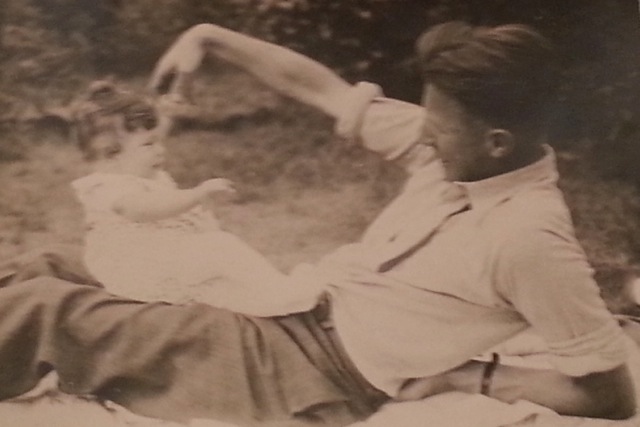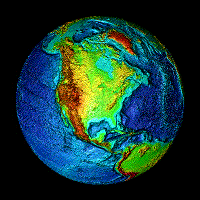|
  Maps
of the world only began to resemble our modern satellite-imaged, global view of
Earth after the voyages of Christopher Columbus between 1492 and 1504 . Then
observations of the similarities of opposing coastlines led to suggestions,
beginning in 1596, that the continents had been previously joined, but
subsequently broke apart and separated. In 1912, Alfred Wegener presented
compelling evidence and advanced his theory of continental drift, which was
resurrected fifty years later and recast as plate tectonics. But plate tectonics
is problematic, depending critically upon physically-impossible mantle
convection. Ott Christoph Hilgenberg, pictured at right, conceived a
fundamentally different possibility which he published in 1933, image at left,
download pdf. Hilgenberg envisioned Earth at
some earlier time being smaller and without ocean basins. Then, for unknown
reasons the Earth began to expand, fracturing the uniform continental rock crust
and forming interstitial ocean basins. Maps
of the world only began to resemble our modern satellite-imaged, global view of
Earth after the voyages of Christopher Columbus between 1492 and 1504 . Then
observations of the similarities of opposing coastlines led to suggestions,
beginning in 1596, that the continents had been previously joined, but
subsequently broke apart and separated. In 1912, Alfred Wegener presented
compelling evidence and advanced his theory of continental drift, which was
resurrected fifty years later and recast as plate tectonics. But plate tectonics
is problematic, depending critically upon physically-impossible mantle
convection. Ott Christoph Hilgenberg, pictured at right, conceived a
fundamentally different possibility which he published in 1933, image at left,
download pdf. Hilgenberg envisioned Earth at
some earlier time being smaller and without ocean basins. Then, for unknown
reasons the Earth began to expand, fracturing the uniform continental rock crust
and forming interstitial ocean basins.
Hilgenberg's concept became the basis
for Earth expansion theory which offered a different explanation for
geophysical phenomena, but neither were complete theories possessed
problematic elements. Yet both served as stepping stones to a more
fundamental and inclusive geoscience theory, published by J. Marvin
Herndon, which he calls
Whole-Earth Decompression Dynamics and which is a consequence of
Earth's early formation as a Jupiter-like gas giant; for a quick
overview, click here.
Ott Christoph Hilgenberg's concept
stands as one of the most important in the geoscience. Hilgenberg
proposed the only logical, causally-related explanation why the Earth's
surface is composed of two different types of matter, continental rock
and ocean-floor basalt.
 Acknowledgements: We appreciate
permission given by Helge Hilgenberg, daughter of O. C. Hilgenberg, to
allow free reproduction of Vom wachsenden Erdball. Helge is
pictured at right with her father, Ott Christoph Hilgenberg. Acknowledgements: We appreciate
permission given by Helge Hilgenberg, daughter of O. C. Hilgenberg, to
allow free reproduction of Vom wachsenden Erdball. Helge is
pictured at right with her father, Ott Christoph Hilgenberg.
We thank
Professor Karl-Heinz Jacob for graciously loaning his copy of the book
to Norbert T. Rempe whom we thank for scanning the book and providing
this pdf for downloading.
|



 Maps
of the world only began to resemble our modern satellite-imaged, global view of
Earth after the voyages of Christopher Columbus between 1492 and 1504 . Then
observations of the similarities of opposing coastlines led to suggestions,
beginning in 1596, that the continents had been previously joined, but
subsequently broke apart and separated. In 1912, Alfred Wegener presented
compelling evidence and advanced his theory of continental drift, which was
resurrected fifty years later and recast as plate tectonics. But plate tectonics
is problematic, depending critically upon physically-impossible mantle
convection. Ott Christoph Hilgenberg, pictured at right, conceived a
fundamentally different possibility which he published in 1933, image at left,
Maps
of the world only began to resemble our modern satellite-imaged, global view of
Earth after the voyages of Christopher Columbus between 1492 and 1504 . Then
observations of the similarities of opposing coastlines led to suggestions,
beginning in 1596, that the continents had been previously joined, but
subsequently broke apart and separated. In 1912, Alfred Wegener presented
compelling evidence and advanced his theory of continental drift, which was
resurrected fifty years later and recast as plate tectonics. But plate tectonics
is problematic, depending critically upon physically-impossible mantle
convection. Ott Christoph Hilgenberg, pictured at right, conceived a
fundamentally different possibility which he published in 1933, image at left,
 Acknowledgements: We appreciate
permission given by Helge Hilgenberg, daughter of O. C. Hilgenberg, to
allow free reproduction of Vom wachsenden Erdball. Helge is
pictured at right with her father, Ott Christoph Hilgenberg.
Acknowledgements: We appreciate
permission given by Helge Hilgenberg, daughter of O. C. Hilgenberg, to
allow free reproduction of Vom wachsenden Erdball. Helge is
pictured at right with her father, Ott Christoph Hilgenberg.